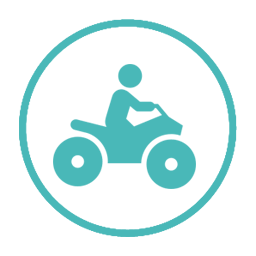Lesson Plans for Grades 9 to 12
As driving becomes a reality for some students at this age, the topics in these lesson plans reflect the new experiences, situations and decisions that they might encounter, and how to mitigate the associated risks.
Students will work both independently and in groups throughout the activities, with opportunities for them to share and expand their current knowledge and debate with their peers. They will also have an opportunity to learn about and discuss deterrence factors, as well as suggest new ways to encourage safe behaviour through road signs.
Teaching and learning strategies
- Include a range of cooperative and collaborative learning strategies addressing differentiated instruction and multiple intelligences, and appreciate and build upon student differences in group and whole-class activities. Be flexible in terms of instructional approaches, groupings and resources.
- Allow for co-construction of meaning and exploration of a variety of perspectives, focusing on open-ended questions that engage all learners in higher-order thinking. Developing and using problem-solving skills through describing, analyzing, integrating, comparing and explaining.
- Develop a conceptual and deep understanding of key teachings through making connections, reorganizing information, and critical thinking. Communicate and think through the processes of speaking, listening, reading, writing, viewing and representing.
- Address adolescent literacy development and challenges while reflecting a thoughtful and coherent use of literacy and learning strategies. Engage in the stance of critical literacy that compels social action.
- Encourage a diversity of perspectives by helping students to reshape and reframe their thinking through collaborative learning activities. Work towards building inclusive, collaborative communities.
- Provide scaffold support to help each student grow beyond his or her current level of achievement, while gradually releasing responsibility to the student to help foster individual learning. Coach and provide descriptive feedback to small groups of students or individual students during activities.
- Facilitate student participation in cooperative learning towards social, emotional and academic success.
Cross-curricular linkages

Find School Activities for your students’ Grade level and engage your school in road safety-related initiatives.

See the Community Engagement Kit for more ideas, tools and tips to bring together the community for a road safety event.

See Adaptation Tips for a list of tips and aspects to consider when adapting these activities to fit your class needs.





